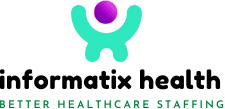Telehealth, the use of technology to deliver healthcare services remotely, has significantly transformed the healthcare landscape, particularly nursing practice. With the increased adoption of telehealth, nursing professionals have seen substantial shifts in how they provide care, communicate with patients, and manage healthcare processes. Here are several key ways telehealth has impacted nursing practice:
1. Expanded Access to Care
Telehealth has dramatically increased access to healthcare services, especially for patients in rural or underserved areas. Nurses are now able to reach patients who might otherwise face barriers such as long travel distances, lack of transportation, or limited access to specialists. By providing virtual visits, monitoring patients remotely, and facilitating teleconsultations with physicians, nurses can help reduce health disparities and ensure that patients receive timely care.
2. Enhanced Patient Monitoring and Follow-up
Nurses are using telehealth to monitor chronic conditions such as diabetes, hypertension, and heart disease more effectively. Remote patient monitoring (RPM) tools, such as wearable devices, apps, and sensors, allow nurses to track vital signs like blood pressure, glucose levels, and weight. This real-time data enables nurses to intervene early when a patient’s condition begins to deteriorate, improving health outcomes and preventing hospital readmissions.
3. Improved Patient Education
Telehealth platforms offer new ways for nurses to educate patients about their conditions, medications, and self-care strategies. Nurses can provide virtual educational sessions, share resources, and answer questions in real time, ensuring that patients understand how to manage their health effectively. This has been particularly beneficial for patients with complex or chronic health issues who need continuous support and education.
4. Increased Collaboration and Communication
Telehealth fosters better interdisciplinary collaboration. Nurses can participate in virtual case conferences, coordinate care across different providers, and discuss patient concerns with a broader care team. This communication can lead to more holistic, coordinated care that addresses a patient’s needs from multiple angles. Nurses also use telehealth to connect patients with specialists or consult with other healthcare professionals without needing the patient to travel, ensuring timely and accurate information is shared.
5. Time and Cost Efficiency
By utilizing telehealth, nurses can provide care in a more time-efficient manner, potentially increasing the number of patients seen each day. This can help reduce the administrative burden of in-person visits and optimize workflow. Additionally, telehealth reduces travel and logistical costs for both patients and healthcare providers. For instance, home health nurses can monitor patients remotely, reducing the need for frequent in-home visits.
6. Role Expansion and Skill Development
Telehealth has expanded the role of nurses, particularly in the areas of care coordination, case management, and patient education. Nurses are becoming more involved in telehealth platform management, patient triage, and the technical aspects of virtual healthcare delivery. As a result, nurses are gaining new skills, such as proficiency in digital tools, remote monitoring, and telecommunication. This evolution requires ongoing professional development to ensure that nurses are adequately trained to leverage technology in patient care.
7. Challenges in Telehealth Integration
Despite its benefits, telehealth also presents challenges. Some nurses may struggle with technology adoption, either due to a lack of familiarity with telehealth platforms or insufficient access to training. Additionally, concerns about privacy, data security, and maintaining a personal connection with patients can affect the effectiveness of telehealth care. There are also issues surrounding reimbursement for telehealth services, particularly in relation to nurse-led care, which may vary by region or healthcare system.
8. Quality of Care and Patient Satisfaction
Studies have shown that telehealth can provide high-quality care, comparable to in-person visits, in certain areas such as chronic disease management, mental health counseling, and post-surgical follow-up. Nurses who engage in telehealth have the opportunity to improve patient satisfaction by offering more convenient and flexible care options. However, maintaining a personal rapport with patients can be challenging, particularly in telehealth’s more limited, digital format.
9. Telehealth and Mental Health Nursing
Telehealth has become particularly important in the realm of mental health nursing. Nurses providing care for patients with mental health issues—such as anxiety, depression, and post-traumatic stress disorder (PTSD)—can deliver therapy, counseling, and check-ins via video or phone consultations. This is especially valuable for patients who may be reluctant or unable to attend in-person appointments. Telehealth also offers a less intimidating and more comfortable setting for patients to discuss sensitive mental health topics.
10. Regulatory and Legal Considerations
Telehealth nursing requires awareness of various regulatory and legal factors. Nurses must navigate state and national guidelines for telehealth practice, including licensure requirements, scope of practice, and informed consent. Different states may have different rules for telehealth services, which can create complexities when nurses are providing care across state lines. Furthermore, legal and ethical issues related to patient confidentiality and the use of digital tools must be carefully managed to ensure compliance with health privacy regulations, such as HIPAA in the United States.
Telehealth has profoundly impacted nursing practice, offering both opportunities and challenges. It has enhanced the ability of nurses to provide efficient, accessible, and patient-centered care, particularly in the context of chronic disease management, rural health, and mental health. However, for telehealth to reach its full potential, ongoing efforts in training, technology integration, and regulatory framework.


